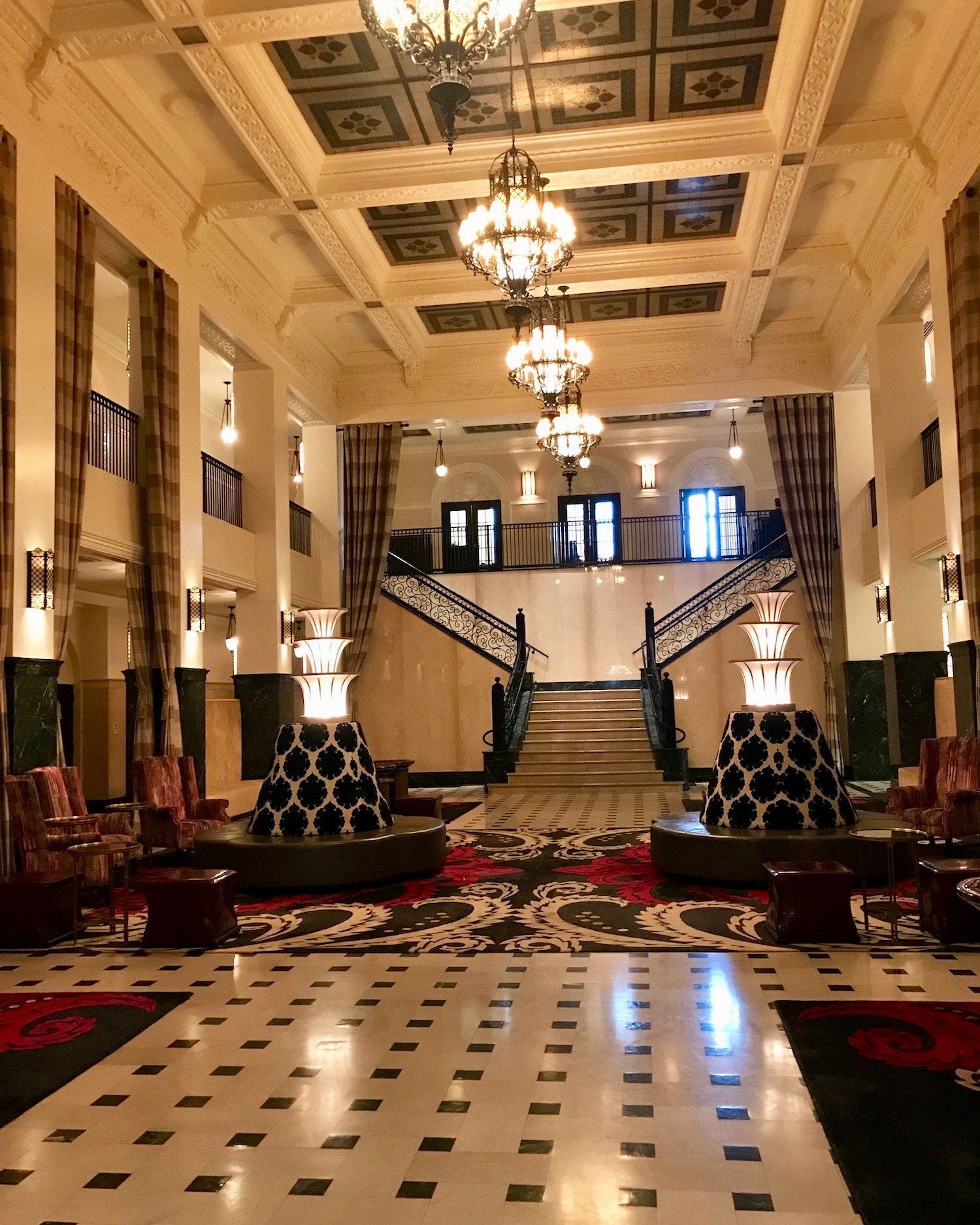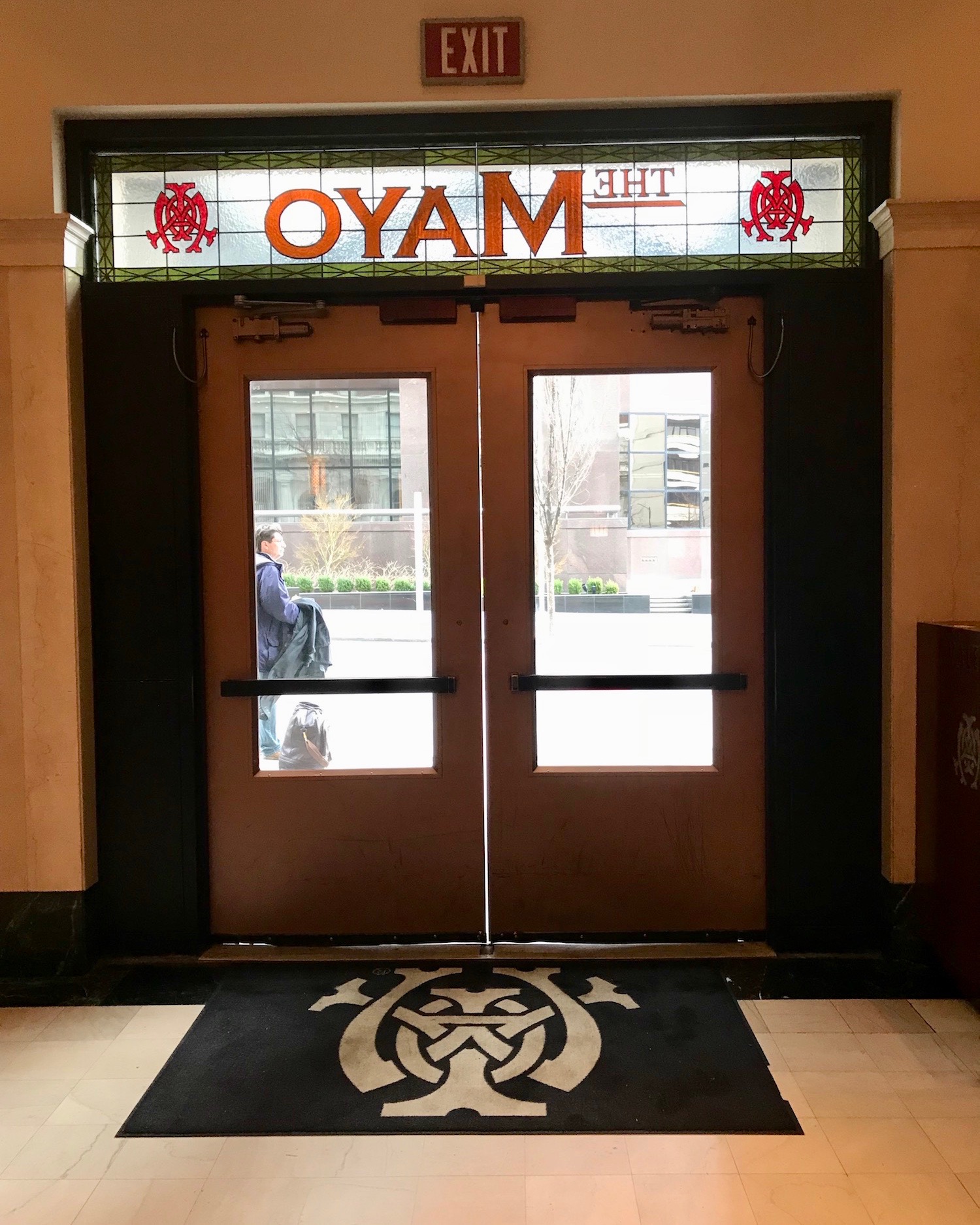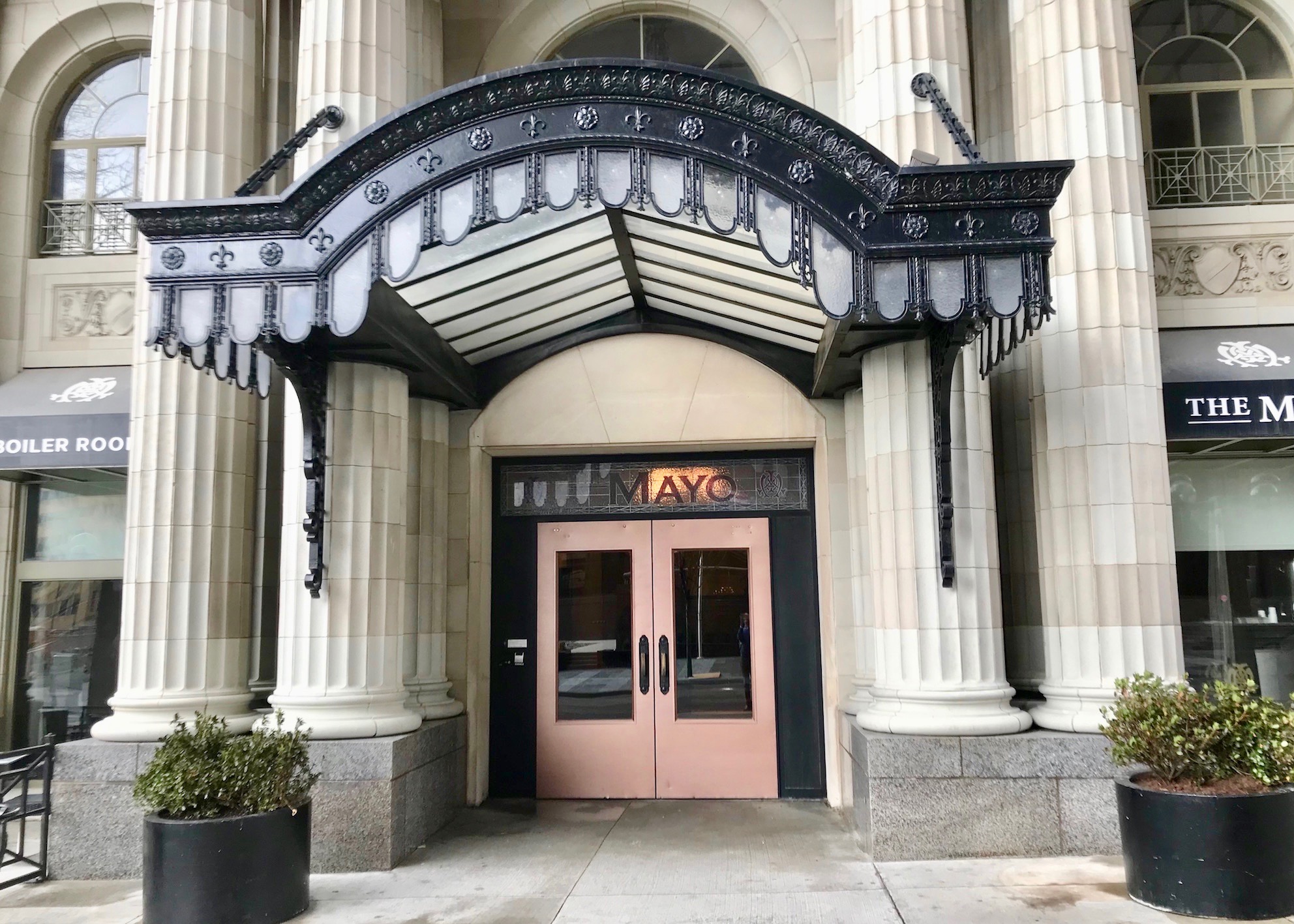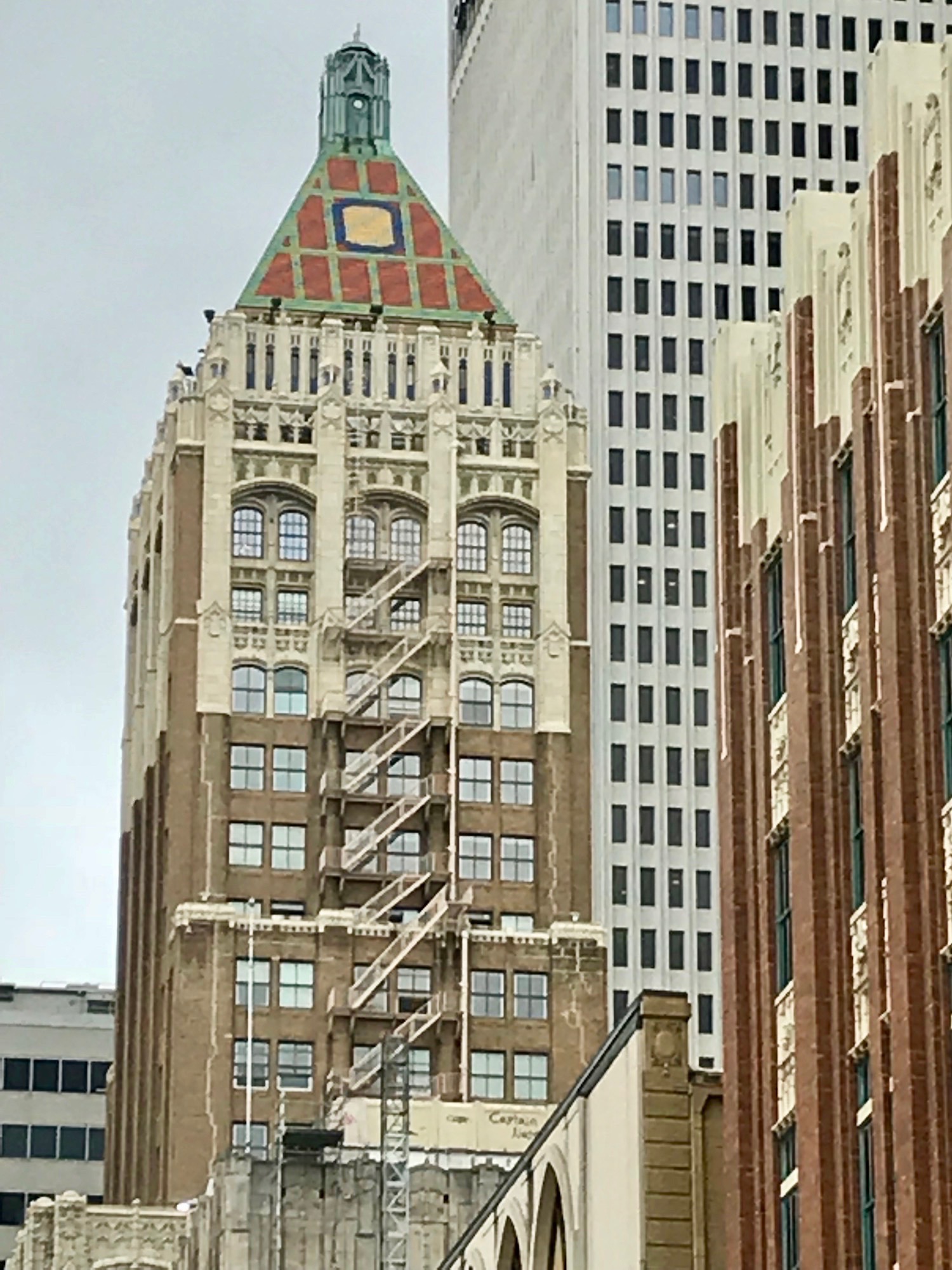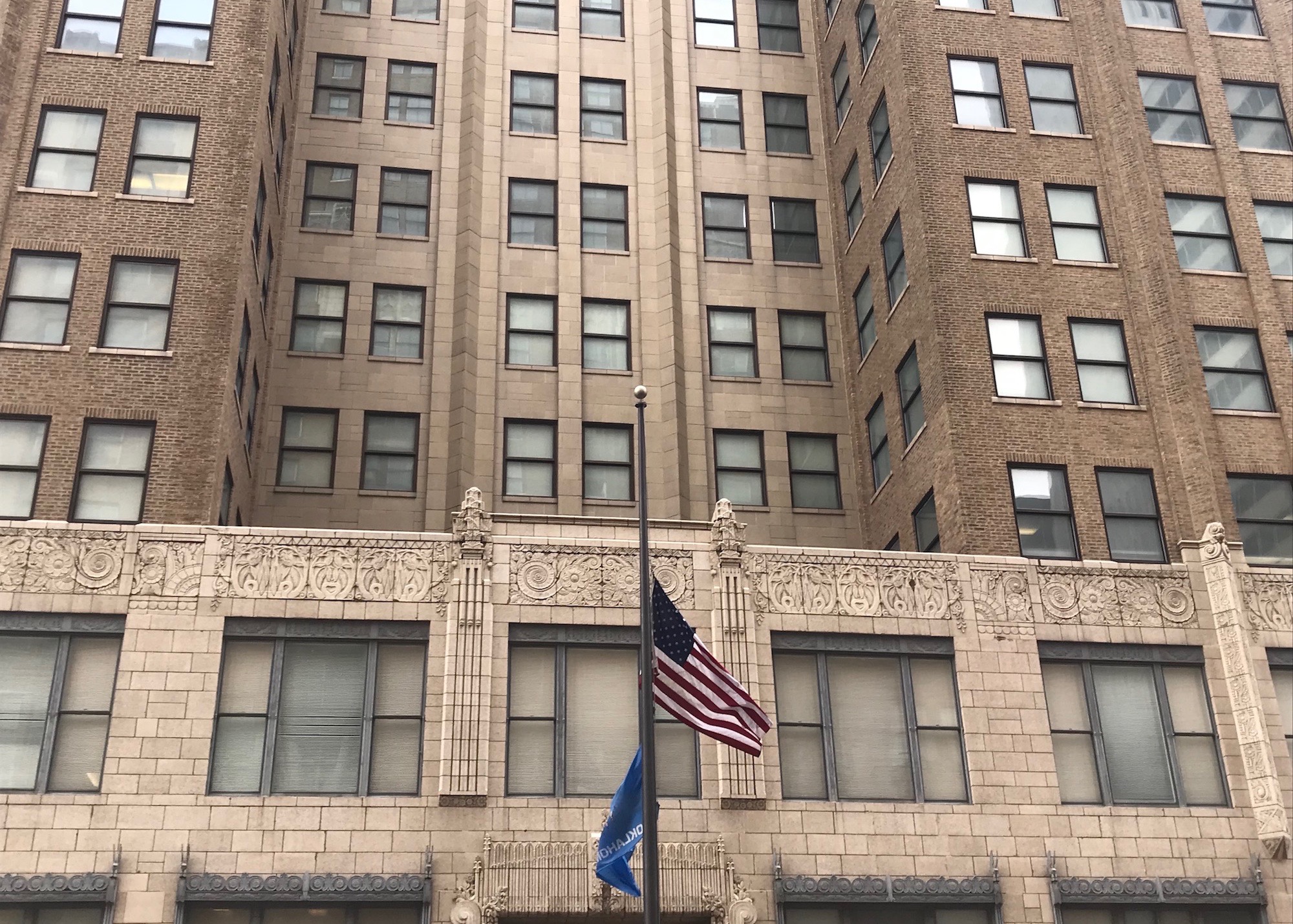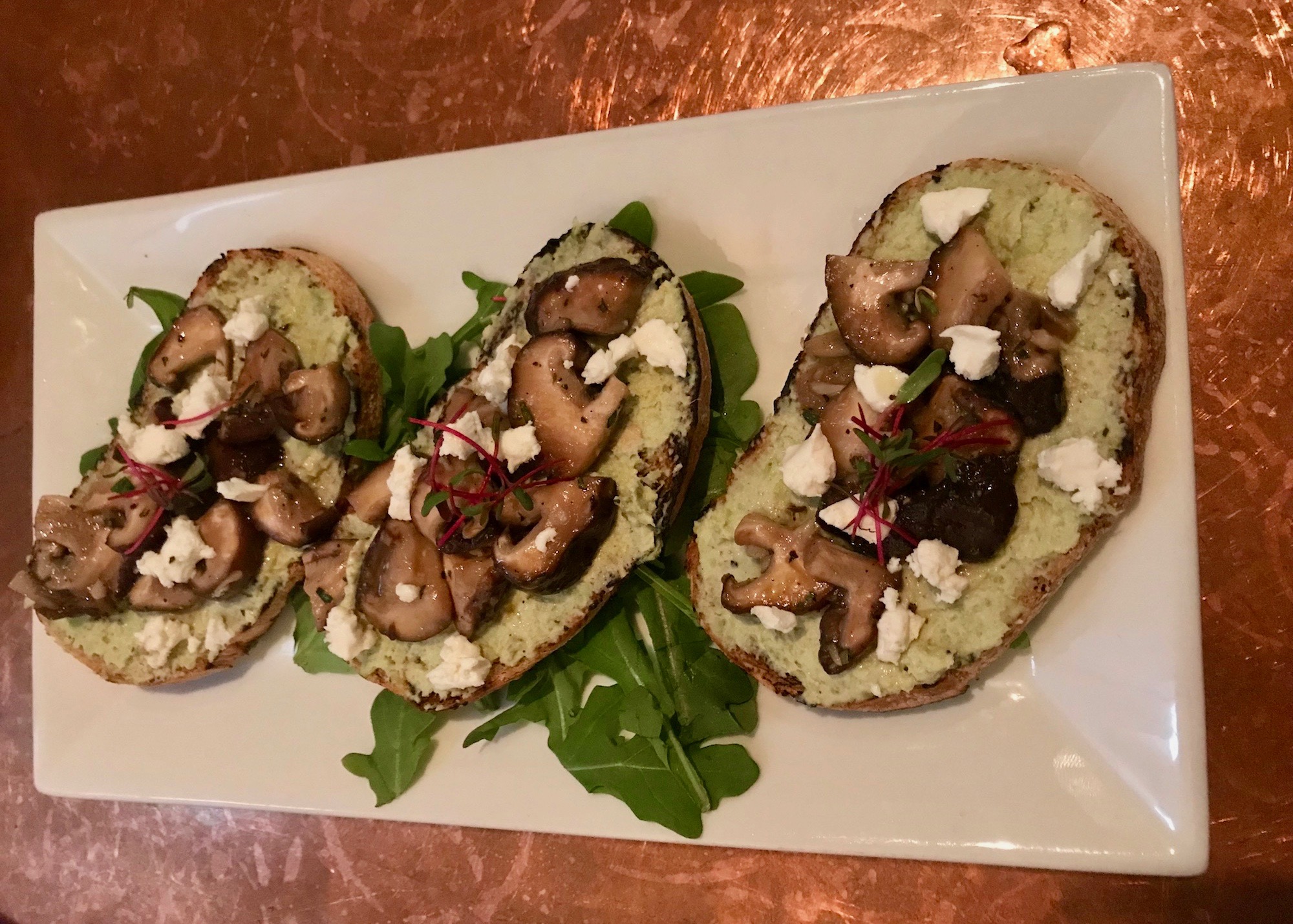Top 10 Art Deco Architectural Jewels in Tulsa Oklahoma
Tulsa has a substantial Art Deco architectural heritage, springing from the wealth derived from the oil industry. Oil barons like Waite Phillips built new skyscrapers in the 1920s from oil monies using the then fashionable Art Deco style. The name Art Deco is derived from the French phrase “Art Decoratif”. Striking geometric shapes are one of its most defining aspects. That Art Deco style appears on city theaters, gas stations, utility company buildings, hotels and office buildings, creating a delightfully walkable downtown that invites a walking tour.

Settling in at the Mayo Hotel
We chose to stay in one of the foremost buildings in Tulsa, The Mayo Hotel at 115 West 5th Street, built by brothers Cass and John Mayo in 1925 when Tulsa was the oil capital of the world, modeling it after the Plaza in New York City. The Chicago School (Sullivanesque) style building was the social hub of Tulsan high society with business deals brokered by oil barons in the opulent lobby. The hotel fell on hard times and was closed in 1981 but reopened in 2009 after a $42 million-dollar restoration. The Mayo boasts a 19-story terracotta façade and was the tallest building in Oklahoma when built.
Above the entryway is the Mayo’s name in red stained glass that is particularly striking at night with the interior lights shining through. The lobby features a sweeping staircase at the back, floor to ceiling curtains at the sides framing entry to the side halls with attractive wall lighting and side chairs, couches and carpeting providing an attractive place to sit and admire the architecture. Our spacious king bedded room had bright accent colors creating a modern retro chic atmosphere and came with a small kitchen and microwave.
We had drinks and appetizers at the hotel’s Boiler room bar, so named because it displays pieces of the original steel boiler that was housed in the penthouse. The service was very friendly, despite our being there towards the very end of the day. We sampled Creole Shrimp and grits, Bahia fish tacos consisting of blackened tilapia with mango salsa with lettuce, tomato and spicy aioli in crispy corn tortillas with an extra side of grits since we both love them, and one portion just wasn’t enough!
Tulsa Architectural Walking Tour
Our interest in seeing Tulsa’s significant architectural heritage led us to uncover a highly-recommended two-hour walking tour of the most significant buildings downtown, with an emphasis on Art Deco. The Visit Tulsa website provides a handy Art Deco Building Tour and map. The tour takes about two hours to comfortably stroll, with time to stop into lobbies to admire the art deco features and occasional murals or stained glass gracing the interiors.

Many of the ornate lobbies are open all week long, but to avoid potential disappointment, check ahead and try to visit during a work day if at all possible. Here are our choices for the top 10 stops:
- PYTHIAN BUILDING – 1930, 423 South Boulder Avenue
Built by two oilmen, Gillette and Tyrell, in 1930, this building was originally designed for thirteen floors with a 10-story hotel on top but only three floors were completed due to the Depression. It was then subsequently sold to the Knights of Pythias in 1931.
The building’s style exhibits an early phase of Art Deco with its Italian, Spanish, and American Indian derived motifs on the exterior terra cotta work and colorful Zigzag decorations. Its roofline decoration is striking in blue and gold, and retail shops and restaurants fill its ground level.

• MAYO BUILDING – 1910/1917, corner of 5th and Main
The first building constructed by the Mayo brothers was funded by the success of their furniture business, and still carries the three-story tall advertising sign. This blonde brick structure is typical of office architecture at the time and the oldest of Tulsa’s oil business buildings.

• PUBLIC SERVICE of OKLAHOMA BUILDING – 1929, 6th and Main
The Public Service of Oklahoma Building was an early Art Deco construction in the so-called Zig Zag style. That a generally conservative utility company would adopt the new Art Deco style in which to build helped lead the way for the host of Art Deco buildings which were to follow. One of the most unusual features of the building is its beautiful nighttime illumination by a series of strategically placed lights. The architect implemented this feature to showcase the client’s product, which was electricity.

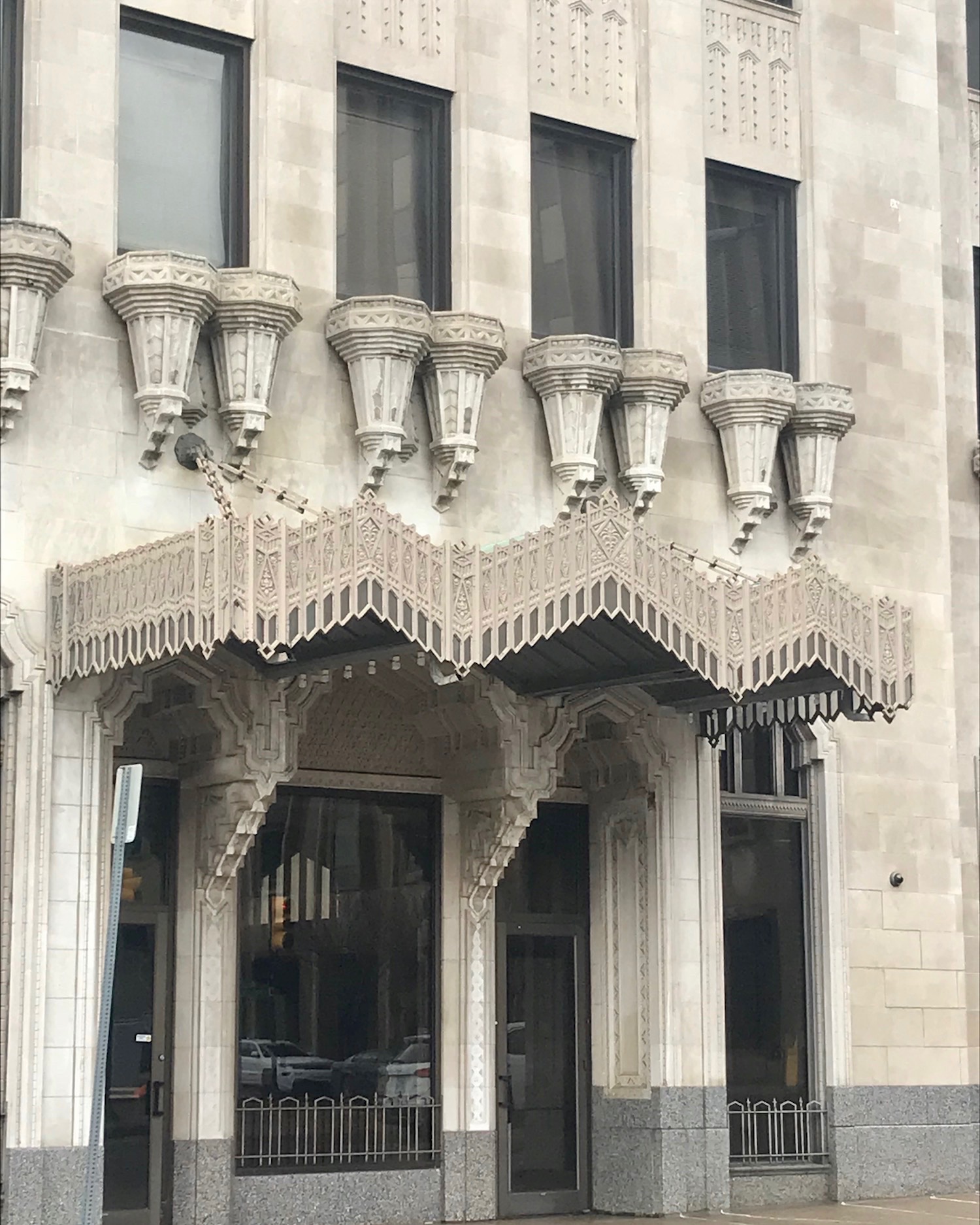
• OKLAHOMA NATURAL GAS COMPANY BUILDING – 1928, 624 South Boston Avenue
The Oklahoma Natural Gas Company Building was one of Tulsa’s first Art Deco buildings. Its 10-story height is enhanced by the piers which rise unbroken to the top of the building. The windows are inset between the piers that are covered with decorative tile whose motifs include chevrons and geometrical shapes of Art Deco design.

• PHILTOWER – 1927, 427 South Boston Avenue
Built by oilman Waite Phillips, the Philtower was known as the Queen of the Tulsa skyline. The 24-story building is topped by a sloping, colorfully tiled and shingled roof (get some distance from the building to be able to spot the tiled roof). The beautiful interior lobby contains chandeliers and English fan vaulted ceilings representing the late Gothic Revival style embellished with Art Deco details. Two gargoyles perch above the Boston Avenue entrance.
• PHILCADE BUILDING — 1931, 511 South Boston Avenue
The Philcade Building is significant for its interior art work, its architectural design, and its association with the developing oil industry. There is an ornamental frieze at the mezzanine level. Geometric designs are executed in shades of red, blue, green, purple, and brown, the favored colors of Art Deco. Step inside to admire the lavish interior ground floor arcades of the building. The Art Deco Museum displays part of its collection in the windows within the Philcade’s lobby, with a nice selection of artifacts and photographs of Art Deco designs, craft and architecture.
• SOUTHWESTERN BELL MAIN DIAL BUILDING – 1924, 5th and Detroit
The first two floors were built in 1924 in the Gothic Style, erected to house the new telephone dial equipment. In 1930, when Zigzag Art Deco had supplanted the Gothic style, a four-story addition was made.
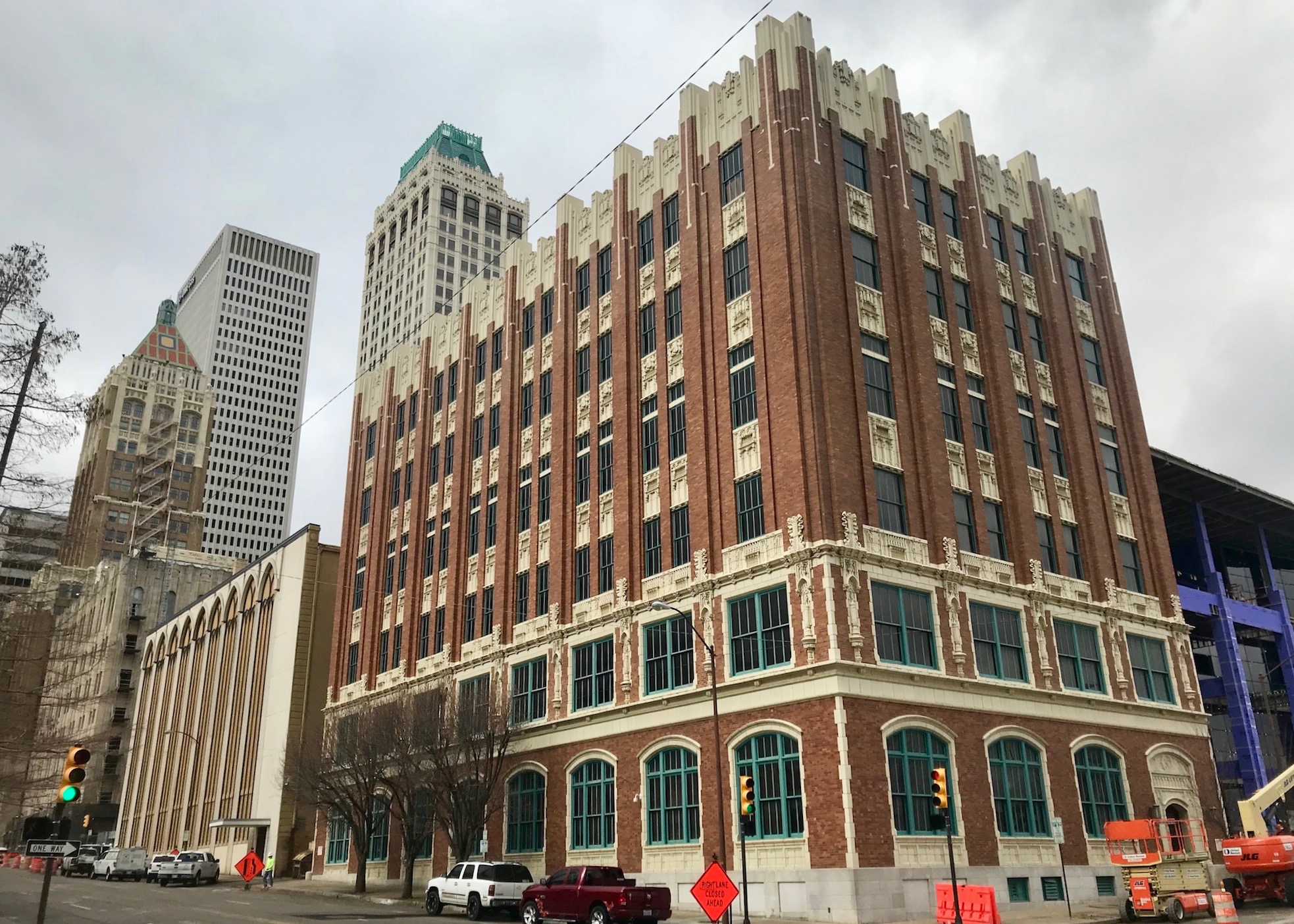
• TULSA UNION DEPOT – 1931, 3 South Boston Avenue
Completed in 1931, the Union Depot’s exterior reveals the Art Deco inspiration of machinery as a theme for geometric designs. Servicing as many as thirty-six trains a day in its heyday, the Depot’s use of a transportation hub diminished as the years rolled by and it ceased operation in 1967.
The Depot stood vacant and neglected for years. Then, in 1983, the deteriorating structure, including the caved-in roof, was restored. The renovation of this building was an important milestone in preservation in Tulsa, and the Depot was further rehabilitated in 2007 to become the home of the Oklahoma Jazz Hall of Fame.

- MINCKS ADAMS HOTEL – 1928, 403 South Cheyenne
You will be struck immediately by the wildly ornate terra cotta façade. Built by I. S. Mincks to capitalize on the 1928 International Petroleum Exposition, the building has thirteen floors, with a full basement and penthouse. Produced by the Northwestern Terra Cotta Company, the terra cotta pastel blues and reds are still quite noticeable. Its highly ornate facade is an imaginative combination of Gothic, Italian Renaissance, and Baroque decorations.
Farm to Table Dining at Juniper
We rounded out our Tulsa experience with an early 4 p.m. dinner at Juniper, a farm to table restaurant located in the Blue Dome entertainment district, named for the roof of a 1920s-era Gulf Station. The restaurant opened in 2011 and features locally-sourced ingredients. We found the meal fresh and inviting, an experience that makes you want to come back. We must admit that, at the outset, we were a little disappointed that the tasting menu advertised on their website was not offered. However, the quality of the food was excellent, as was the service.
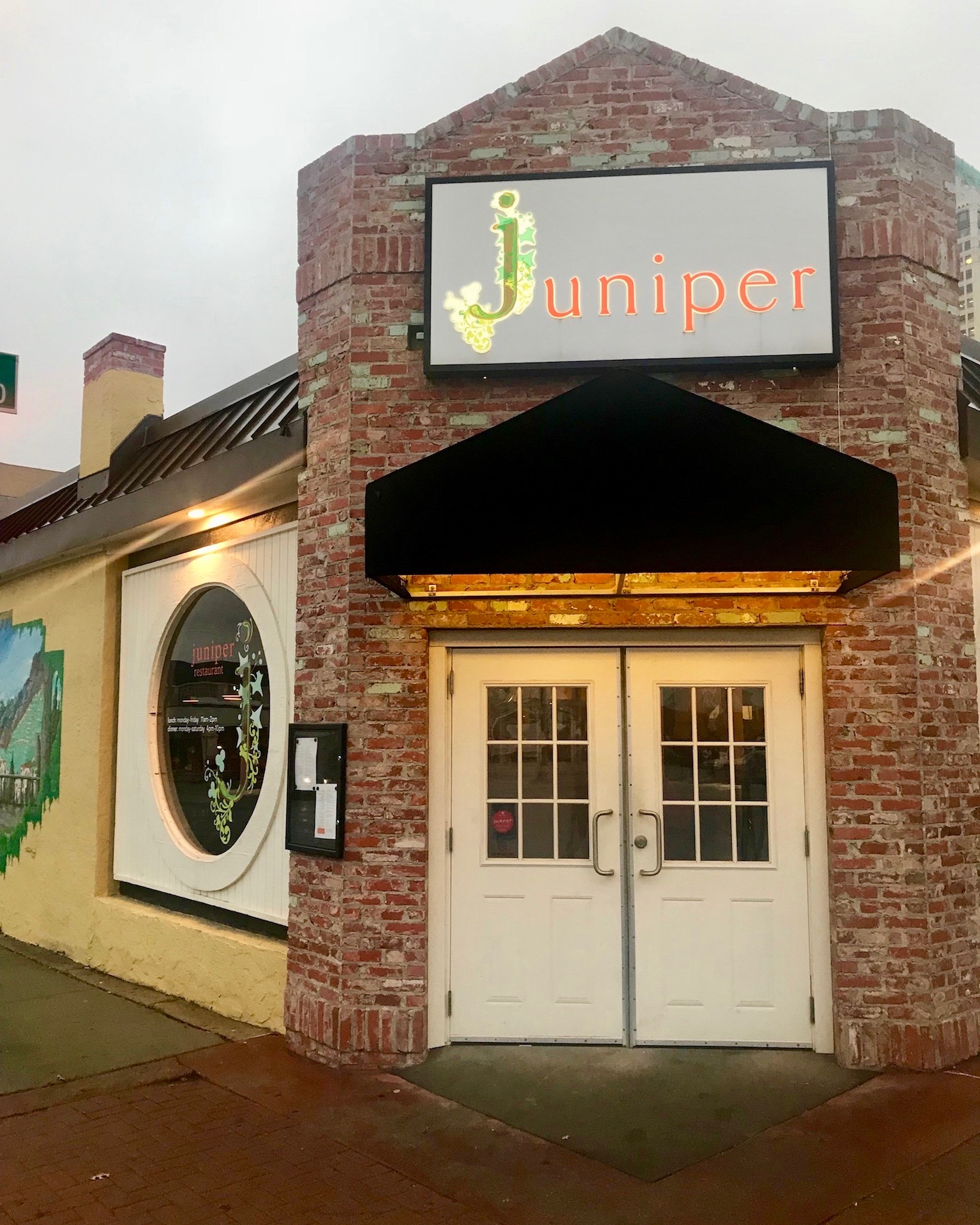

We started with a mushroom-based amuse bouche. The green Toast appetizer (edamame hummus, country bread, marinated spring mushrooms, crumble of goat cheese) was terrific, a great combination of flavors) as were the Napa cabbage wraps (whiskey braised short ribs, kimchi, fish sauce caramel, sprinkled with hazelnuts). These were abundant and satisfying shared starters.
Letizia’s blackened grouper entree was amazing with garlic cream poached sweet potatoes and fried sweet potato ribbons on a bed of spinach chimichurri sauce, the fish firm and spicy. My trout was also excellent, a very healthy brown butter trout, on top of farro with grilled brocollini, the dish delicate and light. To close we sampled a strawberry creme brûlée and Joe’s chocolate pie with oreo crust, dark chocolate mousse, chocolate streusel, chocolate ganache, chocolate whipped cream for dessert.
Tulsa’s extensive Art Deco treasures make the city a worthy destination. But don’t make the mistake we did of coming on a Monday when the two-renowned Tulsa museums, the Philbrook and the Gilcrease Museum’s collection of American western art are closed. Tulsa’s architectural riches from its oil baron days and its Route 66 era can easily fill your day, but time your visit for when its full range of sights is available to you!


